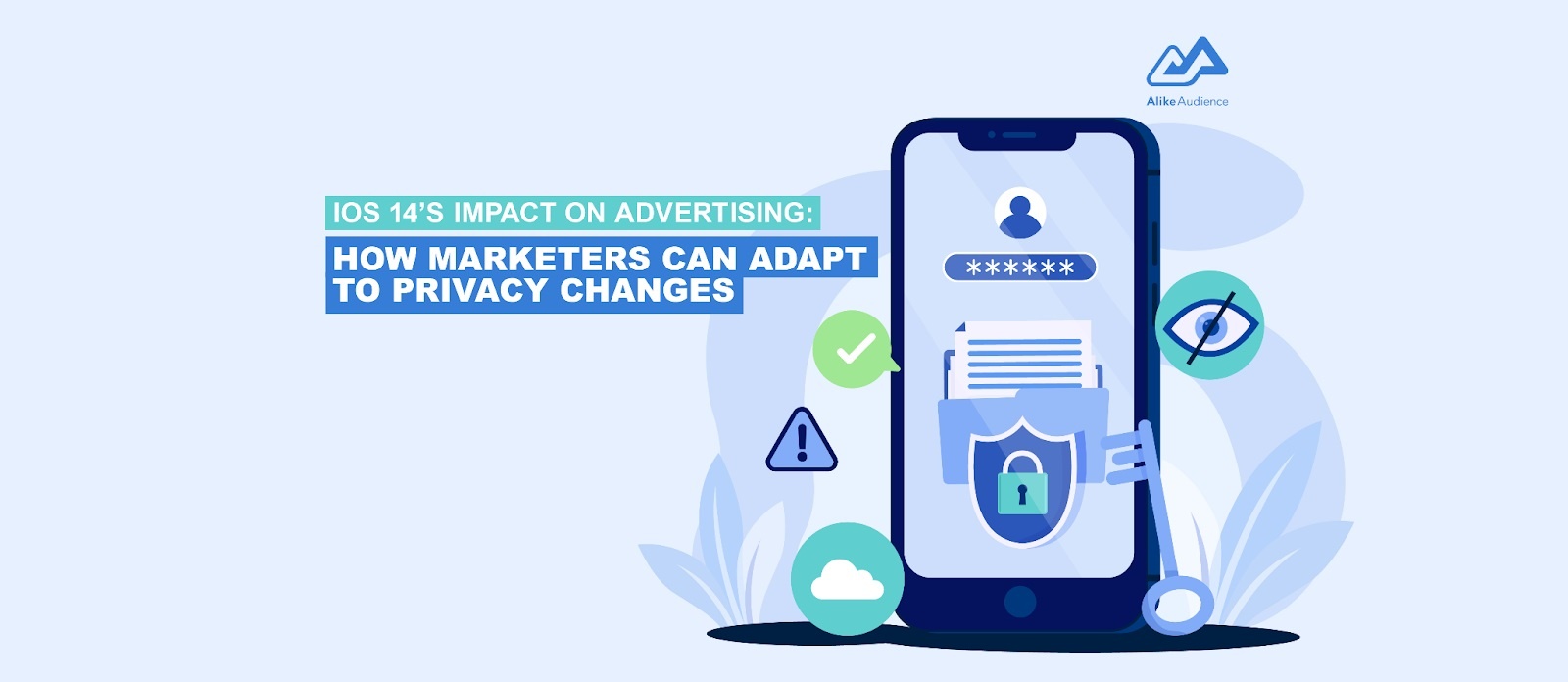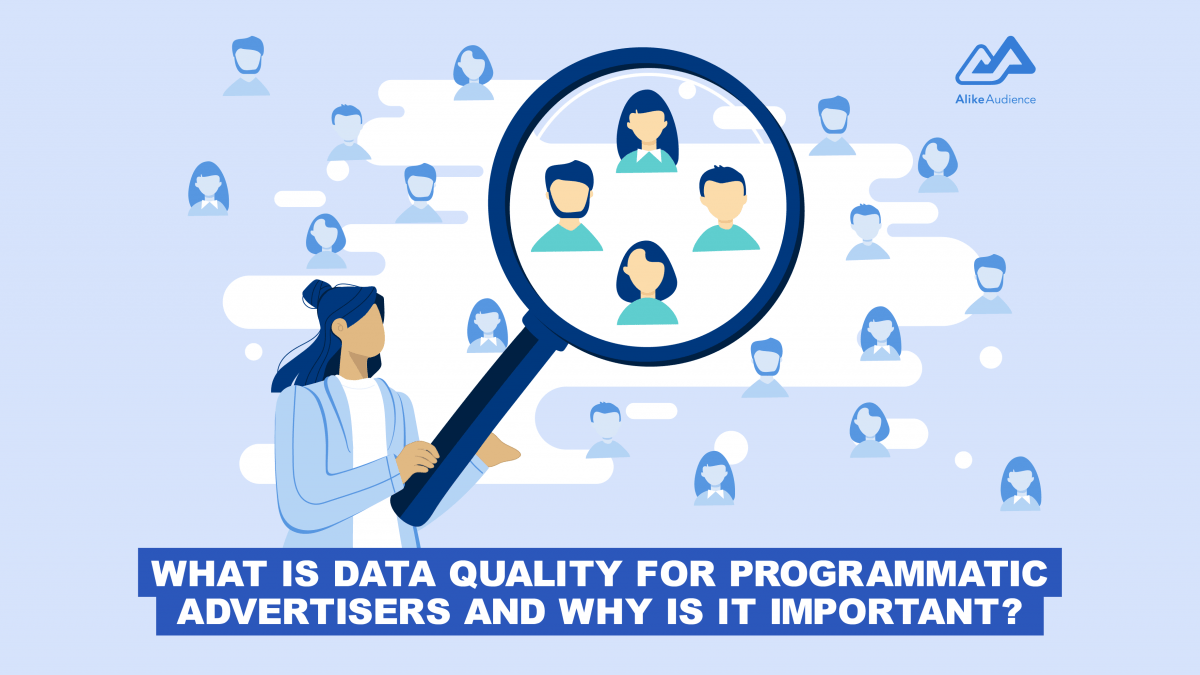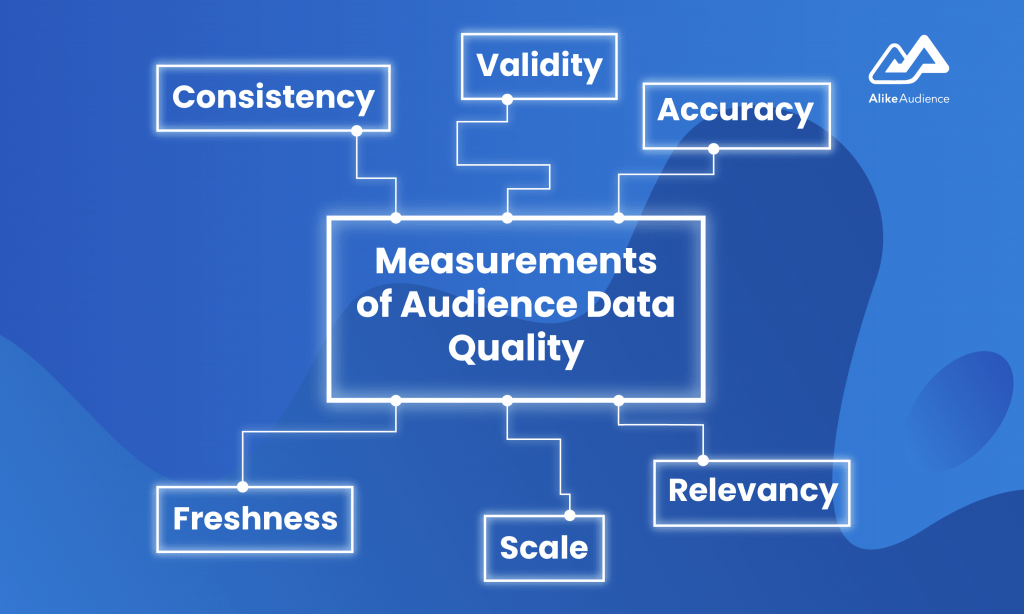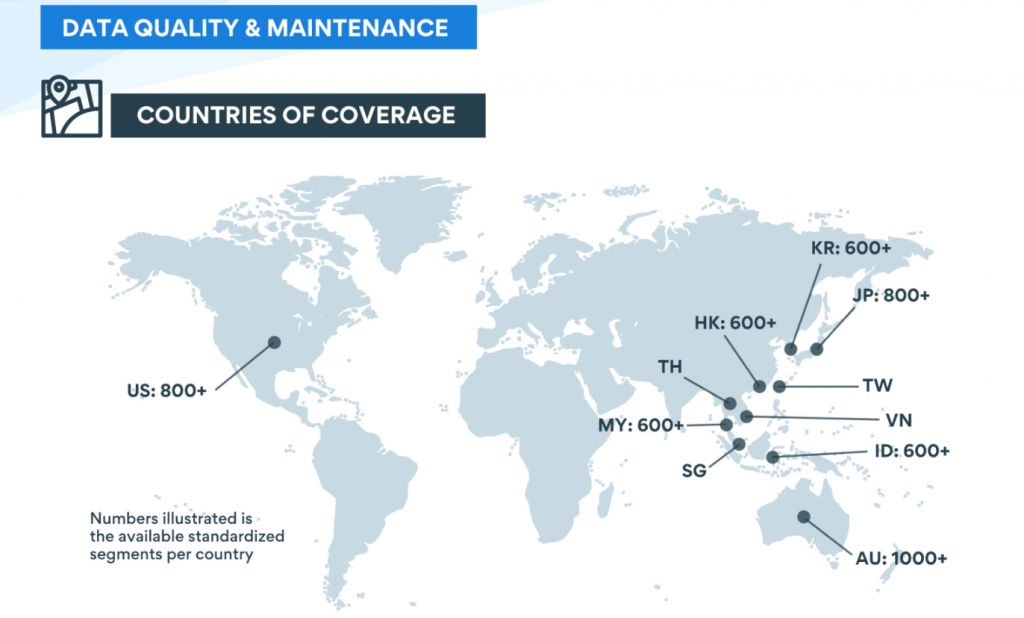
How Lookalike Modeling Hyper-Targets Audiences at Scale
September 23, 2022
iOS 14 Impact on Advertising: How Marketers can Adapt to Privacy Changes
November 7, 2022
Data is one of the most valuable assets a programmatic advertiser can have in today’s digital-driven marketing world. Without it, the ability to carry out informed decision-making is diminished, resulting in significant repercussions like imprecise analytics, unreliable marketing strategies, and operational errors in marketing campaigns.
Businesses rely on high-quality data to carry out essential processes, which can include everything from day-to-day marketing and advertising activities to devising key business strategies.
A 2017 article by the MIT Sloan Management Review highlighted the value of having high-quality data, after it was estimated that correcting data errors and dealing with business problems caused by low-quality data costs companies 15% to 25% of their annual revenue on average.
In this post, we dive into the importance of having high-quality data in your marketing campaigns, data quality dimensions, and how AlikeAudience segmentation ensures high-quality data for all programmatic advertisers.
What is data quality and why is it important?

With data now a vital part of every marketing strategy and operation, the overall quality of data collected, stored, and consumed can determine the success of digital marketing practices in the long run. In fact, IBM in 2016 estimated that the annual cost of data quality issues in the U.S. alone amounted to at least $3.1 trillion.
But what exactly does data quality mean for programmatic advertisers?
In marketing, data quality indicates the reliability of a given dataset for its intended use or purpose, allowing advertisers to make informed decisions, run creative marketing campaigns, and develop effective analytical strategies. It refers to the implementation of activities that apply data quality management techniques to ensure data is fit to serve specific advertising goals.
For programmatic advertisers, having access to high-quality data means having the ability to accurately target audiences in the right demographic and behavioral traits with ease.
Let’s say you’re selling a particular product targeting a specific age group or gender. Having and using high-quality data would ensure your audience segments are accurate and resonate with the right group of people, and are not inaccurately targeting those outside of your audience.
Read more: Five Insider Programmatic Advertising Strategies for Digital Marketers
6 Data Quality Metrics to Keep in Mind

Data quality dimensions are measurement attributes of data, which you can individually assess, interpret, and improve.
So by which metrics do we measure data quality? There are six main dimensions and characteristics that contribute to high-quality data, including:
- Accuracy: As one of the most important characteristics of high-quality data, real-time data accuracy tells you how well your data reflects reality. Inaccurate data can lead to inaccurate marketing solutions and harm the results of your analysis and subsequent business decisions. At AlikeAudience, our audience segments are up to 90% accurate for Age and Gender, according to Nielsen Digital Ad Ratings.
- Freshness: Data quality timeliness measures how quickly new information is available for use across all sources. If your queried data requests take too long to finish, your data may not be well-organized, structured, or formatted. AlikeAudience’s segments are refreshed with new data every 30 days over platforms, allowing you to obtain the most up-to-date information for your marketing campaigns to reach potential opportunities.
- Relevancy: Data relevancy refers to whether or not your data is sufficiently complete and consistent enough to carry out a given task. The data you collect should be useful for other marketing campaigns you intend to use it for and the goals you aim to achieve.
- Scale: Data scale offers audience targeting solutions that are of high quality, accurate, and comprehensive. An effective data quality framework should be able to deploy rules and processes across all applications and datasets at scale.
AlikeAudience uses lookalike modeling to create scalable segments so you can reach millions of your best customers, which include audience segments such as interest, in-market, demographic, and reach.
- Validity: Data validity is the degree to which a dataset conforms to a defined format or set of rules. Data is considered valid if it is presented in the correct format, type, and range – any data presented incorrectly is invalid, and can affect the completeness of your overall data results.
- Consistency: Data consistency refers to whether your data matches information from other sources. When comparing your data quality from multiple datasets, applications, or sources, all of your data should appear the same.
Lookback windows, which refer to the period of time after an ad is clicked or viewed, also play a vital role in obtaining comprehensive high-quality data. For demographic audience segments, longer lookback windows can give you a higher scale which is always favorable to an advertiser.
Depending on the segment, the lookback window of AlikeAudience data is generally 30-365 days, and is refreshed on a monthly basis over platforms. Taking the advantage of mobile devices (people are less likely to switch phones in a short period of time) over cookies (30 days expiry), audience behaviors can be identified and targeted for an extended period of time, reaching more potential opportunities.
With these six dimensions in mind, it’s important to also understand why having access to high-quality data is essential to programmatic advertisers and the success of digital marketing campaign analysis.
Read more: How Lookalike Modeling Hyper-Targets Audiences at Scale
Why data quality matters to programmatic advertisers

As data management techniques continue to rapidly evolve, having access to high-quality data has become an increasingly important component for many marketing teams and businesses.
Data quality is a valuable asset to all digital marketers, agencies, and media companies for one main reason – when making decisions using comprehensive, accurate data, you can give your customers the best experience possible.
Having access to better data enables advertisers to have more accurate targeting and communications in the omnichannel environments many marketing initiatives are moving toward.
The better the quality of your data is, the better you can analyze data, conduct effective marketing campaigns, and create reliable strategies more quickly and efficiently. This results in better ROI and more precise digital marketing campaigns.
Basing your decisions on bad data or poor-quality data damages your overall programmatic advertising strategies, efforts, and performance, causing negative repercussions for your marketing team in the long-run.
When you are equipped with good data quality, you better understand your existing and potential customers' needs, interests, expectations, and purchasing behaviors. This allows you and your marketing team to more successfully satisfy and engage customers, raise brand awareness, and drive higher conversion rates.
Read more: What is Brand Safety? 4 Strategies for Advertisers to Protect Their Brand Online
How do AlikeAudience segments ensure high-quality data?

Since day one, AlikeAudience has strived to address problems in the third-party data marketplace by sourcing IDs directly from partners and providing clear and consistent methodology across all audience segments.
With third-party cookies and IDFAs fading out, you’ll often hear data providers adopting a more privacy-compliant approach. But the issue is that the audience segments they’re providing to you on different data marketplaces still include IDs that have been opted out since Apple’s ATT policy took effect.
Since the IDFA and third-party cookies announcements, AlikeAudience only works with consented MAIDs and hashed emails. This has been a major breakthrough in the ad tech industry, as AlikeAudience segments are consumers who understand the opt-in value exchange.
AlikeAudience ensures high-quality data by referring to data sources taken from partners that strictly adhere to global data privacy regulations and laws, namely the General Data Protection Regulation (GDPR) and California Consumer Privacy Act (CCPA). The three main channels of data sources in AlikeAudience include:
- Direct channel: direct interaction with AlikeAudience through activities such as account creation, registration forms, or sales inquiries and transactions.
- Automated channel: AlikeAudience uses automation technology like server-to-server connections to connect with customers and store data.
- Publicly available and third-party data: Data is collected from automated channels on non-AlikeAudience sites, other data sources users have made publicly available (e.g., public posts, likes, and comments), or data provided by third-party sources (e.g., location data aggregators and marketing opt-in lists).
AlikeAudience is a platform-agnostic data provider, with data quality offerings that can be activated against display and video ad inventories across mobile in-app, desktop and mobile browsers, CTV, and tablets.
Read more: Where does AlikeAudience User Data Come From?
Wrapping Up
Programmatic advertisers can’t ignore data quality. Having a unified, comprehensive data strategy for your marketing campaign is incredibly important for every digital marketer, especially those seeking to improve their advertising efficiency, overall data quality, and customer journey.
Regardless of your target audience or age group, partnering with a trusted, accurate, and global data management provider like AlikeAudience for your programmatic advertising needs can help you hyper-target niche audience segments for high ROI marketing campaigns.
With over 7,000 customer audience segments to choose from, you can ensure data of the highest quality and valuable audience segmentation through on-target demographics, B2B segments, purchase intent from transaction data spending, and mobile app interests with ease.
Find us on your favorite DSP or contact our data strategist for custom solutions. Sign up for our email newsletter for regular ad tech insights!
